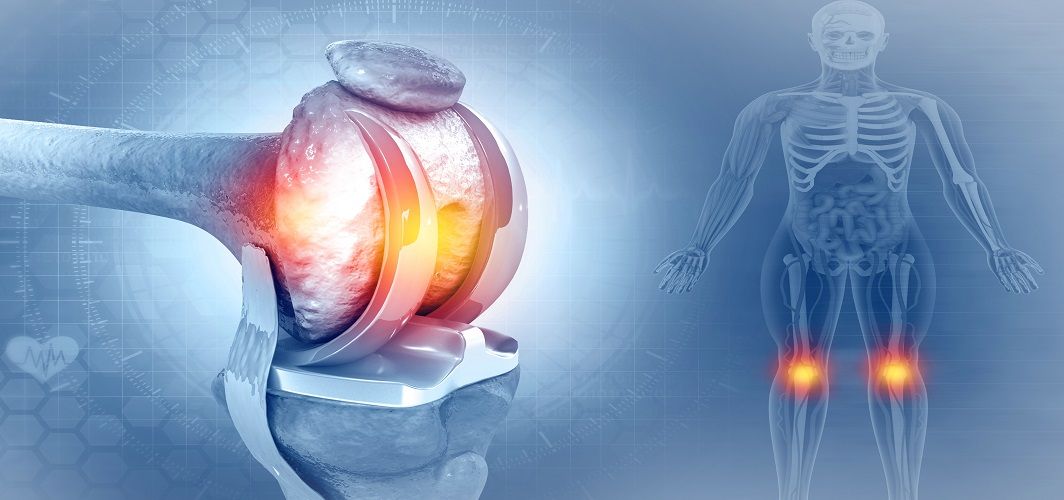Orthopedic Conditions
What Is Osteopenia How Can It Be Prevented?
4 min read
By Apollo 24/7, Published on - 07 June 2021, Updated on - 18 October 2022
Share this article
0
25 likes

The structure of the bone changes over a lifetime because of the skeletal system's natural process of replacing old bone with new bone (bone remodeling). Studies suggest that with age, bones get brittle, making them prone to fractures. This happens mainly due to the gradual reduction of bone mass after the age of 30 years. Osteopenia is a result of the gradual bone loss that occurs during adulthood.
What is osteopenia and how is it screened?
Osteopenia is a medical condition where a person loses bone mineral mass, but the loss is not as low to be classified as osteoporosis. A bone density test determines the mineral density of the bone via a painless, non-invasive test known as dual-energy X-ray absorptiometry (DXA). This scan determines the mineral content of the bone. The measurements are in T scores. If the bone density is lower than normal but not as low as in osteoporosis, it indicates osteopenia. Osteopenia is known to gradually progress to osteoporosis, a more advanced bone disease.
Difference between osteopenia and osteoporosis
Osteopenia and osteoporosis are both bone-related diseases that make a person prone to fractures. However, the difference between the two is the T scores taken during the bone mineral density test. If the score is between -1 to -2.5, then it is classified as osteopenia while a score lower than -2.5 is classified as osteoporosis.
Symptoms of osteopenia and who should get tested
Osteopenia does not have distinct symptoms until a bone mineral density test is done. However, some people may feel localised bone pains, stooped posture, decreased height, and weakness once they attain the age of 45 years. These indications are good enough to prompt advice from an orthopedic, followed by a bone mineral density test.
Women are more prone to osteopenia than men, especially after menopause and surgical removal of the ovaries. Research is suggestive that people with hyperthyroidism and smoking habits are at increased risk of osteopenia.
Osteopenia treatment
If your bone density test indicates osteopenia, the doctor will schedule bone scans every 2-5 years to check if it progresses towards osteoporosis. Additionally, one will be asked to make specific diet and lifestyle changes and take regular supplements such as vitamin D.
The treatment of osteopenia also includes getting physically active and taking up weight-bearing activities such as walking, jogging, and climbing steps to strengthen bones and build muscles to improve balance. One should aim to get more calcium from low-fat dairy products and vitamin D in the diet to arrest disease progression. Foods such as low-fat milk, cheese, yogurt, and fortified cereals rich in calcium and vitamin D are encouraged.
Medications may be prescribed if one’s T scores are lower than -2 to improve bone health and prevent osteoporosis.
Prevention of osteopenia
Bone mass is at its peak before one attains the age of 30 years. If one fails to achieve peak bone mass in early adulthood, it may result in osteopenia and even osteoporosis. Loss in bone mass is inevitable but one can lower the risk of osteopenia by:
- Quitting smoking and limiting alcohol consumption: Studies indicate that the use of tobacco and alcohol directly impact bone density, negatively affecting bone health. Alcohol interferes with the balance of calcium, an essential nutrient for healthy bones. In addition, it also interferes with the production of vitamin D in the body.
- Avoiding carbonated beverages: Most carbonated drinks contain flavor-enhancing component phosphates which are harmful to bone health. They interfere with calcium absorption and result in loss of calcium from bones.
- Exercising regularly: Regular exercise such as jogging, power yoga, stair climbing, swimming, cycling can enhance bone and muscle health by reducing bone loss. It also helps in the management and prevention of osteopenia to a large extent.
- Consuming a diet rich in calcium and vitamin D: Eating a calcium and vitamin D-rich diet such as eggs, fish, chicken, low-fat milk, curd, cheese, assorted nuts, and seeds promotes healthy bones and prevents osteopenia.
- Taking multi-mineral supplements to support healthy bones: Eating a well-balanced diet usually resolves the body's requirement of various minerals in small quantities. However, to prevent osteopenia and other bone-related conditions, taking mineral supplements rich in magnesium, phosphorous, zinc, and iron is recommended.
- Seeking doctor's advice to treat eating disorders: Eating disorders such as anorexia nervosa and bulimia can trigger bone loss, deficiencies, and affect bone health. In anorexia nervosa, the body produces an excess of the adrenal hormone cortisol, which triggers bone loss. Whereas in bulimia, the continuous act of purging can interfere with the absorption of essential minerals required to maintain bone density. Hence, treating eating disorders can help prevent osteopenia.
Conclusion
Bone health is an important aspect that must not be ignored at any age. However, after 50, getting bone scans done is crucial to diagnose osteopenia. If left untreated, it may silently progress to osteoporosis, resulting in brittle bones and fractures. Early diagnosis of osteopenia can help prevent irreversible future health problems.
For any questions on musculoskeletal health including osteopenia, you can talk to an orthopaedician.
Orthopedic Conditions
Leave Comment
Recommended for you

Orthopedic Conditions
Try These Yoga Asanas To Strengthen Your Back
For people of all ages, yoga has positive effects on both physical and mental health. Yoga can also become a crucial component of your treatment and possibly speed up recovery if you're battling an illness, recuperating from surgery, or dealing with a chronic disease.

Orthopedic Conditions
A Complete Guide on Knee Replacement Surgery
Knee replacement surgery involves removing damaged or worn-out parts of the knee joint and replacing them with artificial components. The procedure typically takes a few hours and is performed under general anaesthesia.

Orthopedic Conditions
Delay Ageing of Your Knees with These Expert Tips by Apollo’s Orthopaedician
Pain in the knee is one of the most common orthopaedic issues experienced by people as they age. Know what causes the knees to age faster and result in pain.
Subscribe
Sign up for our free Health Library Daily Newsletter
Get doctor-approved health tips, news, and more.
Visual Stories

How to Keep Your Bones Strong and Healthy Naturally
Tap to continue exploring
Recommended for you

Orthopedic Conditions
Try These Yoga Asanas To Strengthen Your Back
For people of all ages, yoga has positive effects on both physical and mental health. Yoga can also become a crucial component of your treatment and possibly speed up recovery if you're battling an illness, recuperating from surgery, or dealing with a chronic disease.

Orthopedic Conditions
A Complete Guide on Knee Replacement Surgery
Knee replacement surgery involves removing damaged or worn-out parts of the knee joint and replacing them with artificial components. The procedure typically takes a few hours and is performed under general anaesthesia.

Orthopedic Conditions
Delay Ageing of Your Knees with These Expert Tips by Apollo’s Orthopaedician
Pain in the knee is one of the most common orthopaedic issues experienced by people as they age. Know what causes the knees to age faster and result in pain.